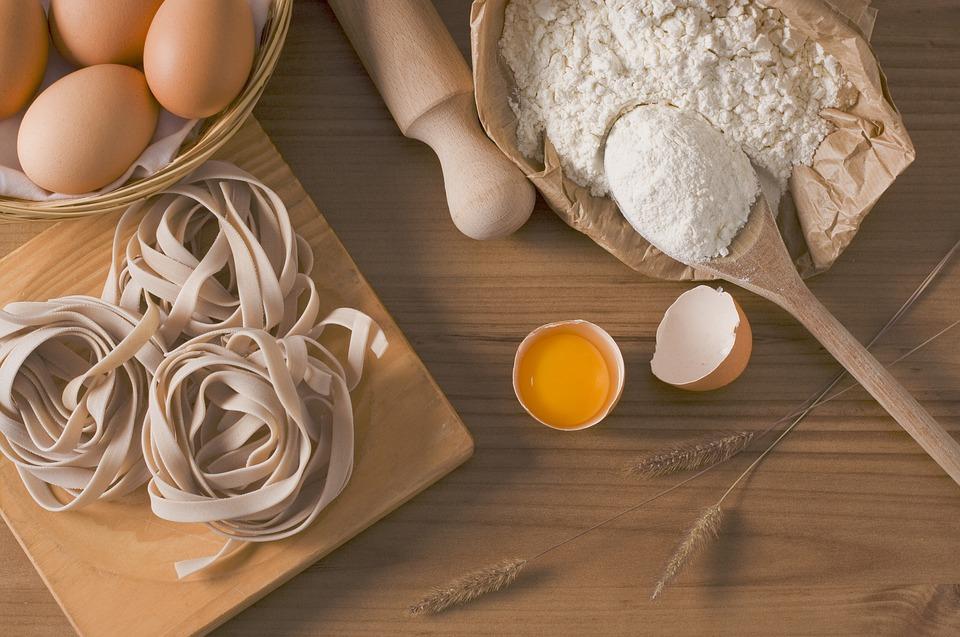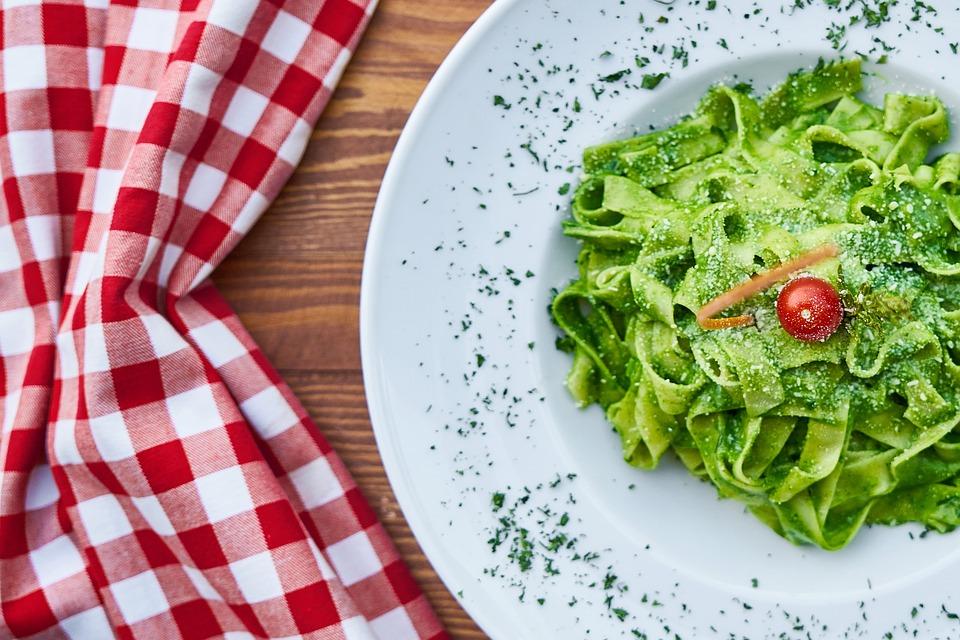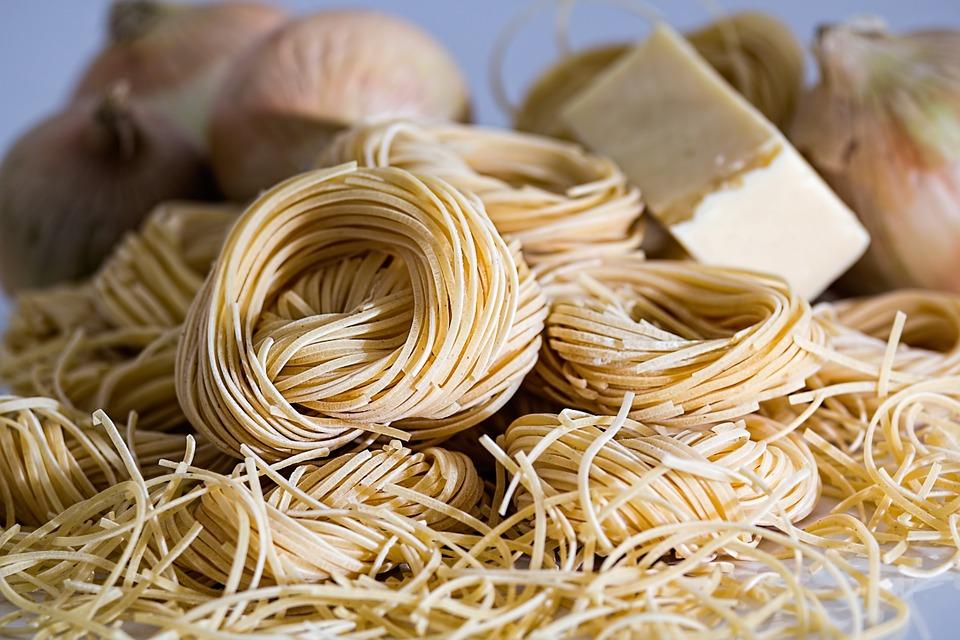There is no absolute answer to this question. It depends on the sort of pasta. As you know pasta is traditionally made from durum wheat, water and eggs. Then the dough is given the desired shape and boiled in water. Though wheat is the main raw material for pasta, you can find various sorts of pasta from rice, barley and buckwheat in the supermarkets.
However, not all manufacturers follow the traditions. Many of them use refined flour instead of solid whole-grain flour. So what is the difference? Whole-grain or entire wheat flour is produced from whole wheat kernels. It contains more fiber, vitamins and minerals. Refined flour is produced from wheat endosperm, and it does not contain any nutrients. However, sometimes products from refined flour are enriched with B vitamins and iron, but it does not make great difference.
Refined sorts of pasta have a more delicate taste, they contain more calories and less dietary fiber. Because of the reduced fiber content, you get the feeling of saturation from these products later than from the whole-grain ones. That is why nutritionists do not advise to include these sorts of pasta in the diet. They are not good for your body shape, and their use can also lead to increased blood pressure, blood sugar and to the increased risk of developing cardiovascular diseases. For this reason, people with diabetes are recommended to reduce the consumption of fast carbohydrates and to increase the amount of fiber. This helps to keep sugar level under control.
However, not all manufacturers follow the traditions. Many of them use refined flour instead of solid whole-grain flour. So what is the difference? Whole-grain or entire wheat flour is produced from whole wheat kernels. It contains more fiber, vitamins and minerals. Refined flour is produced from wheat endosperm, and it does not contain any nutrients. However, sometimes products from refined flour are enriched with B vitamins and iron, but it does not make great difference.
Refined sorts of pasta have a more delicate taste, they contain more calories and less dietary fiber. Because of the reduced fiber content, you get the feeling of saturation from these products later than from the whole-grain ones. That is why nutritionists do not advise to include these sorts of pasta in the diet. They are not good for your body shape, and their use can also lead to increased blood pressure, blood sugar and to the increased risk of developing cardiovascular diseases. For this reason, people with diabetes are recommended to reduce the consumption of fast carbohydrates and to increase the amount of fiber. This helps to keep sugar level under control.
Whole-grain pasta is less caloric, it contains more fiber, manganese, selenium, copper and phosphorus. It is slowly digested thus reducing the appetite. Even if you prefer "slow" pasta, it becomes high-calorie because of the sauce. Not many of us are satisfied with pasta with greens simply sprinkled with olive oil. Most often we add mayonnaise, sour cream, marinara sauce or cream sauce, cooked with cream or butter.
So maybe it is better not to use it at all? No, that’s not true. Event people who are inclined to excess weight and have to monitor their weight can eat pasta. However they should limit its quantity. They should add fresh vegetables and greens to it. If you still want to combine carbohydrates with protein, then make a steamed or stewed meat, fish or seafood. This way you can reduce consumption of empty calories.
Unfortunately, not everyone can enjoy pasta. Some people have got serious problems with gluten. There are special kinds of pasta without gluten. People with gluten intolerance should replace wheat-based pasta and bread with brown rice, amaranth and other gluten-free grains.
So maybe it is better not to use it at all? No, that’s not true. Event people who are inclined to excess weight and have to monitor their weight can eat pasta. However they should limit its quantity. They should add fresh vegetables and greens to it. If you still want to combine carbohydrates with protein, then make a steamed or stewed meat, fish or seafood. This way you can reduce consumption of empty calories.
Unfortunately, not everyone can enjoy pasta. Some people have got serious problems with gluten. There are special kinds of pasta without gluten. People with gluten intolerance should replace wheat-based pasta and bread with brown rice, amaranth and other gluten-free grains.
So we can conclude that wholemeal pasta is more useful than refined pasta. Nevertheless, remember that you must always be moderate. Combine pasta with vegetables and herbs. But if you want to combine it with protein products, choose steamed or cooked fish or chicken and seafood.








